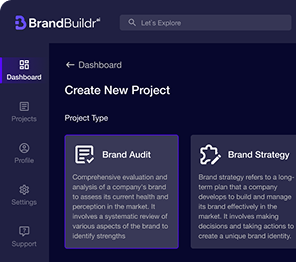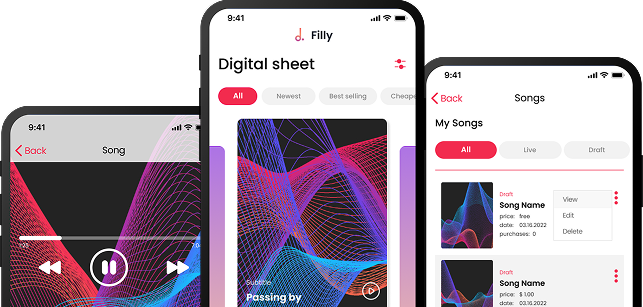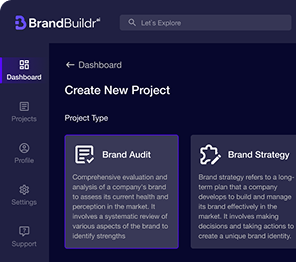Online learning platforms have transformed education by providing flexible, accessible, and personalized learning experiences for users worldwide. As technology continues to evolve, the future of online education is poised to see groundbreaking changes. With trends like artificial intelligence (AI), personalized learning, micro-credentials, and immersive technologies taking center stage, the landscape of online education is set for continued innovation.
In this article, we’ll explore the emerging trends and innovations shaping the future of online learning platforms, offering insights into how these developments are changing the way we learn.

1. Personalized Learning Experiences
One of the most significant innovations in online education is the rise of personalized learning experiences. Traditional classroom environments often adopt a one-size-fits-all approach, but online platforms are now using data and algorithms to create customized learning paths tailored to each student’s needs.
AI-Driven Personalization
Artificial intelligence is playing a pivotal role in personalizing learning experiences. AI algorithms analyze user data, such as learning pace, performance, and preferences, to deliver content that meets individual needs. For example, if a student struggles with a particular concept, the platform can provide additional resources, quizzes, or tutorials to help reinforce that topic.
Adaptive Learning
Adaptive learning technologies adjust content and assessments in real-time based on a student’s understanding. As students progress through a course, the platform adapts to their learning style, offering harder challenges when they excel and providing more support when they struggle.
These personalized experiences ensure that learners remain engaged, reduce frustration, and improve retention, ultimately leading to better educational outcomes.
2. Microlearning and Modular Courses
In today’s fast-paced world, learners are seeking more efficient ways to acquire knowledge. Microlearning, which involves delivering content in short, focused bursts, has emerged as a key trend in online education.
Microlearning’s Popularity
Microlearning allows learners to engage with content for shorter periods, often through videos, quizzes, or articles. This approach caters to those with busy schedules, making it easier to fit learning into their day. Platforms like Duolingo, for example, use microlearning to help users learn languages through short, daily lessons.
Modular Learning
In addition to microlearning, modular courses are becoming increasingly popular. Instead of committing to lengthy courses, learners can now choose individual modules that fit their specific interests or needs. These modules can be combined into a larger curriculum, giving students more control over their education.
For online platforms, offering modular and microlearning options opens the door to lifelong learning, where users can continuously acquire new skills in a manageable way.

3. Gamification and Interactive Learning
Gamification is another major innovation driving the future of online learning. Platforms can enhance user engagement and motivation by incorporating game-like elements such as badges, points, and leaderboards.
Gamified Learning Elements
Gamification taps into the human desire for achievement and competition. It turns learning into a fun, interactive experience. Whether it's earning badges for completing lessons, progressing through levels, or competing with peers on leaderboards, gamified elements encourage learners to stay committed.
Interactive Learning Experiences
Beyond gamification, online platforms increasingly integrate interactive learning experiences to engage students. Interactive simulations, for example, allow students to apply concepts in real-world scenarios. In STEM education, platforms like Labster offer virtual lab simulations where students can conduct experiments in a risk-free environment. Such experiences make learning more dynamic and practical, preparing students for real-world applications.

4. AI-Powered Chatbots and Virtual Tutors
Artificial intelligence is also revolutionizing the support systems within online learning platforms. AI-powered chatbots and virtual tutors offer students assistance at any time, enhancing their learning experience without the need for human intervention.
AI Chatbots for Instant Assistance
AI chatbots are becoming common on learning platforms to answer student queries and provide instant support. Whether it’s answering questions about course content, helping with technical issues, or recommending additional resources, chatbots offer a seamless, 24/7 assistance model that can enhance user satisfaction.
Virtual Tutors for Enhanced Learning
In more advanced cases, AI virtual tutors can help guide students through complex subjects by offering personalized tutoring sessions. These virtual assistants can simulate human-like conversations, adapt to the learner’s progress, and provide real-time feedback.
Platforms such as Squirrel AI in China have already implemented virtual tutors to assist students in mastering subjects like math, science, and language. As AI technology improves, virtual tutors will become even more sophisticated and able to provide in-depth support across a wide range of subjects.
5. Immersive Learning with AR and VR
Augmented reality (AR) and virtual reality (VR) are set to revolutionize online education by offering immersive, hands-on learning experiences. These technologies bridge the gap between theoretical knowledge and practical application, especially in fields like medicine, engineering, and architecture.
AR for Interactive Learning
AR overlays digital information onto the real world, making it possible for students to interact with virtual elements in their physical environment. For example, medical students can use AR to visualize human anatomy in 3D, exploring the body more interactively and engagingly than traditional textbooks allow.
VR for Immersive Simulations
Virtual reality, on the other hand, allows students to enter fully immersive environments where they can practice skills or explore complex concepts. VR has been particularly impactful in training simulations, such as for pilots, surgeons, or engineers. It enables learners to practice in a controlled, realistic environment without the risk of failure.
As AR and VR technologies become more affordable and accessible, we can expect more widespread adoption in online learning platforms, making education more engaging and effective.
%2520(1).avif)

6. Blockchain for Credentials and Certification
Blockchain technology, known primarily for its role in cryptocurrencies, is now finding applications in the education sector, particularly in credentialing and certification.
Blockchain-Powered Credentials
Blockchain provides a secure and decentralized way to issue, verify, and store educational certificates and achievements. Instead of relying on paper certificates or centralized databases, blockchain allows for tamper-proof digital records. This ensures that credentials are authentic and easily verifiable by employers or educational institutions.
Platforms like Blockcerts have already begun to issue blockchain-based diplomas and certificates, providing learners with a permanent, secure record of their educational achievements.
Micro-Credentials and Digital Badges
Micro-credentials, verified through blockchain, are gaining popularity as they allow learners to showcase specific skills or competencies. For example, a student may earn a digital badge for completing a short course in data analytics or project management. These credentials can be easily shared on professional networks like LinkedIn, helping learners boost their employability.
7. Lifelong Learning and Continuous Education
The rapid pace of technological change means that professionals need to continually update their skills to remain competitive in the workforce. Online learning platforms are increasingly focusing on lifelong learning, offering courses that cater to professionals seeking to upskill or reskill.
Professional Development and Upskilling
Platforms like Coursera, Udemy, and LinkedIn Learning offer a wide range of professional development courses designed to help workers acquire new skills in areas like digital marketing, data science, or software development. These platforms provide certification programs that are recognized by employers, making it easier for professionals to transition into new roles or industries.
Corporate Training and Development
Many companies are partnering with online learning platforms to provide continuous education for their employees. This trend is set to grow as businesses recognize the need for a skilled workforce that can adapt to evolving technologies and market demands. Online platforms offer a flexible, cost-effective way for companies to provide training and development opportunities to their teams.
8. Social Learning and Collaborative Platforms
Learning is no longer a solitary experience. Social learning and collaboration are becoming key features of modern online education platforms, fostering a sense of community and engagement among learners.
Discussion Forums and Peer Learning
Platforms are increasingly incorporating social features such as discussion forums, group projects, and peer reviews to encourage interaction among students. This collaborative learning approach allows students to learn from one another, share ideas, and provide feedback.
Virtual Classrooms and Webinars
Virtual classrooms and live webinars are also on the rise, enabling real-time interaction between instructors and students. These features replicate the experience of traditional classroom learning, offering students the opportunity to ask questions, participate in discussions, and engage in group activities, all from the comfort of their homes.
9. Data Analytics for Improved Learning Outcomes
Online learning platforms are leveraging data analytics to improve educational outcomes. By collecting and analyzing data on user behavior, engagement, and performance, platforms can identify areas where students may need additional support and optimize course content accordingly.
Learning Analytics
Learning analytics can track how students interact with course materials, how long they spend on each section, and where they tend to struggle. This data allows educators to make informed decisions about course design, content delivery, and assessment strategies.
Predictive Analytics
In some cases, platforms use predictive analytics to identify students at risk of falling behind and provide early interventions to improve their chances of success. For example, if a student consistently performs poorly on quizzes, the platform might recommend additional resources or tutoring sessions to help them catch up.
The future of online learning is defined by innovation and personalization, empowering learners with the tools they need to thrive in a rapidly evolving world.
Conclusion
The future of online learning platforms is bright, with emerging technologies like AI, AR, VR, and blockchain driving innovation. These advancements are creating more personalized, engaging, and effective learning experiences for students worldwide. As the demand for flexible, lifelong learning continues to grow, online platforms will play an increasingly important role in shaping the future of education.
By embracing these trends and innovations, online learning platforms are well-positioned to meet the evolving needs of learners, helping them acquire the skills and knowledge necessary to thrive in a rapidly changing world. Whether it's through personalized learning, immersive experiences, or verified credentials, the future of online education is poised to make learning more accessible, engaging, and effective than ever before.
Heading 1
Heading 2
Heading 3
Heading 4
Heading 5
Heading 6
Lorem ipsum dolor sit amet, consectetur adipiscing elit, sed do eiusmod tempor incididunt ut labore et dolore magna aliqua. Ut enim ad minim veniam, quis nostrud exercitation ullamco laboris nisi ut aliquip ex ea commodo consequat. Duis aute irure dolor in reprehenderit in voluptate velit esse cillum dolore eu fugiat nulla pariatur.
Block quote
Ordered list
- Item 1
- Item 2
- Item 3
Unordered list
- Item A
- Item B
- Item C
Bold text
Emphasis
Superscript
Subscript





















.avif)



.avif)

.avif)


